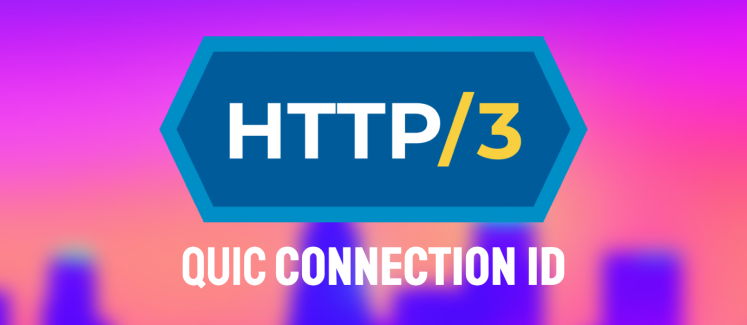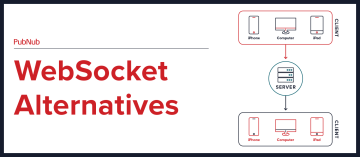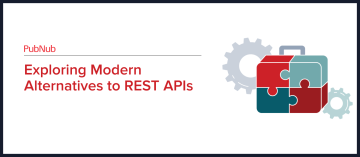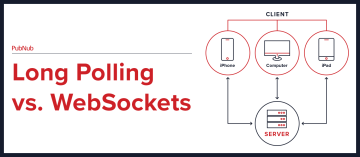
We continue to see rapid enhancements in how connectivity is maintained. One key improvement lies in the implementation of HTTP/3, QUIC protocol, and how it maintains Connection ID's. In this article, we will explore these subjects, highlighting the perseverance of real-time connections in frequently shifting environments like 5G to Wi-Fi, which is a common occurrence on mobile devices.
HTTP/3: A Reimagined Protocol
Born from the fusion of advancements in technology and the need for fluid connectivity, HTTP/3 is the latest series of the de facto protocol for data communication. Its power stems from its ability to supersede the limitations of its predecessors, bringing groundbreaking improvements to the fore. This breakthrough is largely credited to the foundation of the QUIC protocol.
QUIC: A Protocol for the Modern World
QUIC (Quick UDP Internet Connections), created by Google, forms the backbone for performant and resilient connectivity boasted by HTTP/It brings a contemporary solution into play, effectively managing the challenges that come with the dynamic nature of modern internet use, particularly on mobile devices.
QUIC streamlines efficiency by packaging data into Quic packets for transport. Unlike its predecessors, QUIC diminishes connection establishment time, reduces latency, and, most importantly, keeps connections alive even when the network topology changes. The latter provides the foundation for a unique feature seen in HTTP/3.
From 5G to Wi-Fi: Uninterrupted Switching Between Networks
As mobile users, we're constantly switching from data networks like 5G to Wi-Fi. With earlier transport protocols, this would usually result in a disconnection or delay as the device shifts between networks and subsequently, IP addresses. This is where HTTP/3 leverages the power of QUIC and proves its distinctiveness.
QUIC Connection ID: The Game Changer
HTTP/3 capitalizes on QUIC’s Connection ID meant to enable a new way of maintaining connections. Connection ID remains constant across the various IP addresses a device cycles through, be it on a 5G or a Wi-Fi network. This gives HTTP/3 the unique ability to maintain real-time connections during these transitions. The result? A seamlessly stable connection, irrespective of the switching scenarios.
HTTP/3 Rising Above the Rest
The superior capability of HTTP/3 to uphold a steady connection while toggling between different networks, thanks to QUIC, sets it apart from the other protocols. It's evident that the power of QUIC, combined with the advanced features of HTTP/3, offers a powerful approach to managing diverse and shifting connection scenarios seen in modern internet uses.
HTTP/3's powerful feature of maintaining the same Connection ID is undeniably a leap in the right direction for seamless internet usage, ensuring our connectivity remains uninterrupted despite network fluctuations. The emergence of HTTP/3's creation allowing transition between networks offers seamless connectivity.
As we look to the future of data communication with HTTP/3 and QUIC, our digital connections are not just preserved, but are enhancing the way we navigate the realm of the internet. It's safe to say, with HTTP/3, the future is already here and now.
HTTP/3 Frequently Asked Questions
Here are some of the common questions we encountered. As we research advancements of modern protocols, we tend to ask questions. Here are some of the popular questions we encountered:
What is HTTP/3?
HTTP/3 is the latest evolution of the Hypertext Transfer Protocol used for data communication. It offers superior capabilities, including seamless connectivity, faster time to first byte, lower latency, and stability, even when encountering network switches.
Who developed the QUIC protocol?
The Quick UDP (User Datagram Protocol) Internet Connections (QUIC) protocol was developed by Google. It is designed as a modern solution to streamline efficiency, reduce latency, and maintain connections during scenarios even when network topology experiences changes.
How does HTTP/3 maintain a constant Connection ID?
HTTP/3 maintains a constant connection ID through the QUIC protocol. The connection ID isn't dependent on an IP address, allowing it to remain persistent even as users switch between different networks such as 5G and Wi-Fi.
How does switching from 5G to Wi-Fi affect HTTP/3 connections?
With HTTP/3, switching between networks like 5G and Wi-Fi has a minimal effect due to the resilient QUIC protocol. Connection interruptions or delays are diminished, ensuring a stable and real-time connection throughout.
How does QUIC work to reduce latency?
QUIC reduces latency by facilitating faster connection setup compared to traditional protocols. It reduces the number of required round-trip times (RTTs) to initiate a connection, giving it a significant speed advantage. Faster time to first byte.
How does HTTP/3 affect the user experience on mobile devices?
The seamless connectivity and reduced latency provided by HTTP/3 significantly enhance user experience on mobile devices. Users switching between different networks like 5G and Wi-Fi experience real-time, uninterrupted connections, ensuring a smooth browsing or data usage experience.
How does the network topology affect QUIC?
While changes in the network topology typically impact connection stability, QUIC reduces this effect by keeping connections alive despite these changes. This resilience makes it especially useful in mobile environments where IP addresses frequently change.
What is the impact of HTTP/3 on the future of data communication?
HTTP/3 is already shaping the future of data communication with its advanced features like reduced latency, sturdier connections, and session resumption across networks. It sets the standard for future protocols and the ever-evolving landscape of internet use.
Can HTTP/3 connections be interrupted during the switching of networks?
No, one of the central benefits of HTTP/3 is the capacity to keep connections alive during the switching of networks. This capability ensures consistent, real-time connections even when moving between data networks and Wi-Fi signals.
Why is QUIC so important to HTTP/3’s functionality?
QUIC provides the essential foundation for HTTP/3, enabling reduced latency, quick setup times, and seamless connectivity across varying network topologies, all of which are critical functionalities of HTTP/3. The Quick UDP Internet Connections (QUIC) protocol is fundamental to HTTP 3's functionality, primarily for three reasons: Speed, Security, and Seamless Transition.
One of QUIC's primary objectives is to reduce latency compared to HTTP/2, which operates over TCP. The TCP connection protocol involves a "handshake" exchange that can result in visible latency. QUIC bypasses this via "zero-round trip time" (0-RTT), where data is sent with the first message from the client to the server, reducing the latency often involved in opening a connection. Furthermore, QUIC’s use of UDP, as opposed to TCP, prevents the head-of-line blocking problem, where packet loss can delay all subsequent packets. This means packets are processed independently, reducing chances of total connection loss due to a few lost packets, thereby maintaining speed and connection reliability.
HTTP/3 mandates QUIC usage, which inherently contains a TLS 1.3 encrypted handshake. It provides a more secure browsing experience through better encryption and improved speed. This allows the integrity and confidentiality of data to be confidently maintained while significantly minimizing the vulnerability to attacks such as connection hijacking.
One of the standout features facilitated by QUIC is seamless transition across network changes. If a user shifts between connection points, such as from Wi-Fi to a mobile network, QUIC ensures that a website browsing session can continue without interruption. This is made possible by the QUIC's Connection ID which remains consistent across any IP changes.
QUIC is critical to HTTP/3’s functionality as it improves speed, enhances security, and ensures seamless transitions between networks. QUIC combines the best of HTTP/2 and TCP, modifies and improves upon them, then provides this in a model that aligns with the way users interact with the internet in the modern world.
How has Google’s QUIC protocol influenced data communication protocols?
The QUIC protocol has expanded the boundaries of what's possible in data communication, influencing the development of HTTP. It has reshaped data packet transportation at the transport layer, encouraging the development of protocols focused on speed, stability, and consistency.
What does it mean that HTTP/3 is "powered by QUIC?"
HTTP/3 being 'powered by QUIC' means that it utilizes the revolutionary features of the QUIC protocol. This means reduced latency, persistence of Connection IDs, and resilience during network switching. It allows for superior browsing experience.
Why do devices need to switch between networks like 5G and Wi-Fi?
Devices frequently switch between networks to ensure the best possible connection. Factors like signal strength, data plan restrictions, and availability of networks can necessitate a shift between 5G and Wi-Fi. HTTP/3's advantage is that it maintains seamless connectivity during these transitions.
Support
Quic network connections are supported by all modern web browsers (Chrome, Edge), firewalls, web servers, and operating systems. It is not a new protocol, and you will find a Quic implementation available for all your users, so you can start using Quic today


